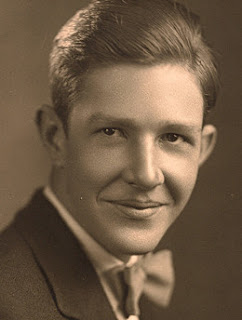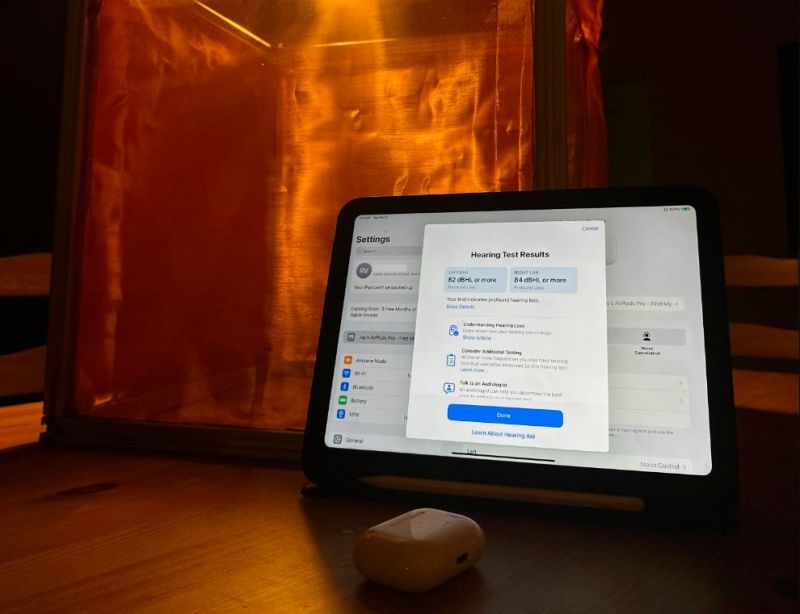Although we created this blog primarily to discuss the music and life of Lou Harrison, his close friendship with composer John Cage prompted some of our most interesting explorations of the directions of American experimental music in the twentieth...
Although we created this blog primarily to discuss the music and life of Lou Harrison, his close friendship with composer John Cage prompted some of our most interesting explorations of the directions of American experimental music in the twentieth century. I had met Cage in the 1980s and knew of him, like most people, as the brilliant explorer of radical art, indeterminacy and Zen Buddhism. But through our research in Harrison’s life, especially of his early life, we came to know a very different Cage. Therefore, I was delighted to contribute some research and this essay about a pivotal point in Cage’s early life -- when he decided to devote his life to the arts -- for a symposium on Cage in Claremont, California, hosted by the library of the Claremont Colleges in September 2018. | |
| The 15-year old John Cage, second from right, in a
Los Angeles Times photo documenting his prize-winning oratory. |
Two years later, a C average Pomona College dropout, Cage was traveling around Europe with another man and an obsession about modern art, making abstract drawings that he thought could be turned into music. In short, he was on his way to becoming one of the most innovative and influential artists of the twentieth century. Whatever happened in those two years, happened in Claremont.
 |
| Fannie Dillon with composer Arthur Farwell. |
Founded by Congregationalists, Pomona College had 800 students at the time, who were joined by 62 students of the new adjoining Scripps College for women. Annual tuition was $300. Clark dormitory was under construction, and most of the male students lived in shared houses off campus. At Pomona, Cage enrolled in the freshman liberal arts sequence, which included history, math, English, German, French, religion, and physical education. Unlike in high school, he also joined the Pomona College choir [2].
 |
| Aerial view of Pomona College and the city of Claremont, 1928. |
 |
| Pomona College's Carnegie Library. |
We can blame Pomona College. Gertrude Stein’s famously elliptical style was notorious for its modernism but then published by small presses and largely inaccessible in the United States. Nevertheless, Pomona College’s Carnegie Library had copies of several Stein works by 1928, copies still in the Claremont College Library’s collection, including Tender Buttons and Geography and Plays. Cage’s interest showed up in Pomona College’s student literary magazine, The Manuscript, in a rather bizarre short story by one “Jonathan” Cage titled “The Immaculate Medawewing,” about a young man’s obsessive revulsion at anything dirty.
| Pomona College personnel record for John Cage. |
 |
| A dance at Frary Hall the fall before Orozco painted his mural. |
Modern music found its way to Claremont as well. The Student Life student newspaper quoted a visiting French pianist as speculating that “in the future, music will be set forth more and more by means of mechanical instruments” [5]. Los Angeles’ leading concert pianist, Richard Buhlig, also visited campus and his friend music Professor Ralph Lyman. Buhlig, a student of Hinduism and Buddhism, often performed the works of European modernists and had given the American premiere of Schoenberg’s opus 11. Two years later, Cage would hitchhike to Buhlig’s house in Los Angeles and camp out on his lawn for 12 hours in order to see him. Buhlig eventually gave Cage his first lessons in composition.
 |
| A preview of Henry Cowell's 1929 concert in Pomona College's student newspaper The Student Life. |
Henry Eames, the first music professor at Scripps College, said in The Student Life that Cowell’s “thought-provoking and stimulating contribution to pianistic tonal-beauty comes to this generation as an original message—original in its emotional and aesthetic content and original in the type of piano and notation technic developed by Mr. Cowell....’Original’ is a dangerous word to use lightly, but it is the correct one to describe the type of tone-thinking of this ‘Challenger of Conventions.’”
 |
| Bridges Hall at Pomona College. |
At the time of Cowell’s visit, despite his fascination with modern art and literature, Cage apparently had no aspirations to become a composer. (On his personnel form, his "occupational outlook" switched from "minister" to "writing.") Only after a few years and the recommendation of Buhlig would Cage seek out Cowell as a teacher, one who would be a formative influence on the young composer.
Claremont also gave Cage one other important relationship that finally led him away from California. Alan Sample was an amateur poet and painter who had studied at Harvard some years before and was hanging around Claremont. Sample was a decade older than Cage, and his European travels and knowledge of the European avant garde must have seemed very worldly to the teenaged Cage. Sample introduced him to the arts journal transition, which was in the Pomona College library and was one of the most important venues in which news of the European avant garde reached the United States. In it, Cage read William Carlos Williams’ defense of noise as a musical element [7]. Together, Cage and Sample put on an art exhibition in Claremont [8], and their relationship became a romantic one.
 |
| John Cage, circa 1930 |
Cage ended up in Galveston, Texas, where he boarded a ship for Le Havre, France. Cage met Sample in Paris, where they took in the modern arts scene. He met another of his Pomona College professors, José Pijoán, the same art professor who had arranged the commission for the Orozco mural, and told him that he wanted to study Gothic architecture. According to Cage, Pijoán’s response to such historical interests was to “lift his foot and [give] me a violent kick in the pants” [10].
I like to think that, despite Cage’s disillusionment with academics, Claremont’s role was also to give the teenage Cage a kick in the pants.
Notes:
[1] Much of this information can be found in Robert Stevenson, “John Cage on His 70th Birthday: West Coast Background.” Inter-American Music Review 5, no. 1 (1982): 3–17.
[2] See Cage chronology in Paul van Emmerik, ed. A John Cage Compendium.
[3] Qtd. in Thomas Hines, “‘Then Not Yet “Cage”’: The Los Angeles Years, 1912-1938” in Marjorie Perloff and Charles Junkerman, eds. John Cage: Composed in America, University of Chicago Press, 1994: 78.
[4] Cage’s personnel form is archived at Pomona College (shown above).
[5] For these and the following quotes from The Student Life, Pomona College’s student newspaper, I am indebted to the research of Pomona student Oliver Dubon.
[6] These quotes come from a December 1929 issue of The Student Life previewing Cowell's Pomona concert, but one article mentions that Cowell visited Scripps earlier that fall. According to the timeline in Joel Sachs' Henry Cowell: A Man Made of Music, 179, it would have to have been before September 11.
[7] See the discussion in Branden Wayne Joseph, Experimentations: John Cage in Music, Art, and Architecture, Bloomsbury, 2016: 45. The original article is William Carlos Williams, “George Antheil and the Cantilene Critics,” transition 13 (Summer 1928): 240. Joseph assumes, like some other writers, that Cage met Sample in Europe, whereas we have other evidence that they first met in Claremont and later decided to meet up in Europe.
[8] Stevenson 8. See also Mark Swed, “John Cage’s Genius: An L.A. Story,” Los Angeles Times Aug. 31, 2012.
[9] Hines 79.
[10] Hines 79.












